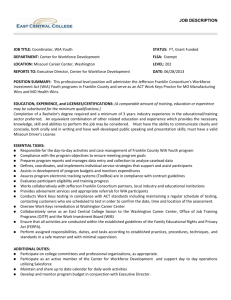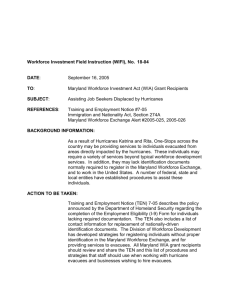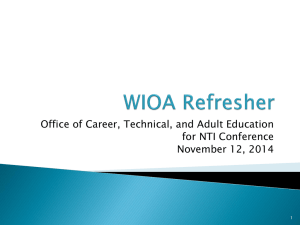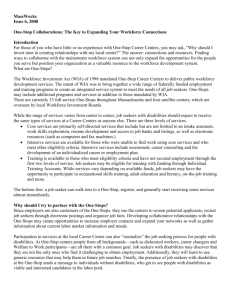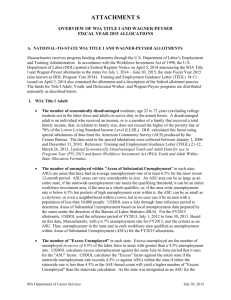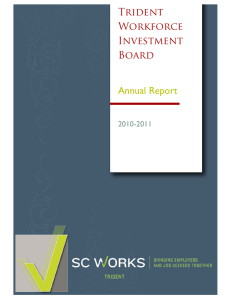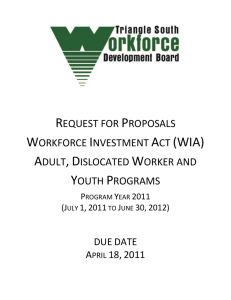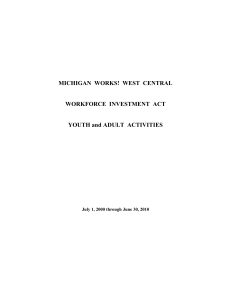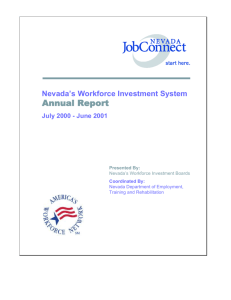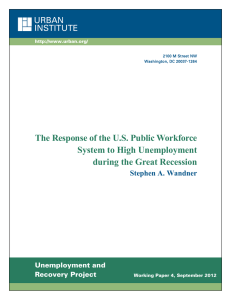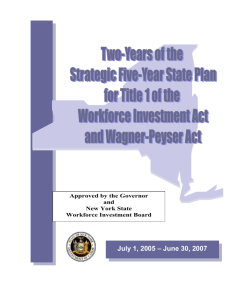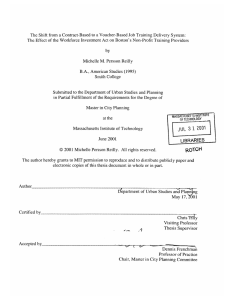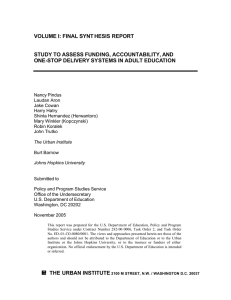specific policy recommendations for core principles of wia
advertisement
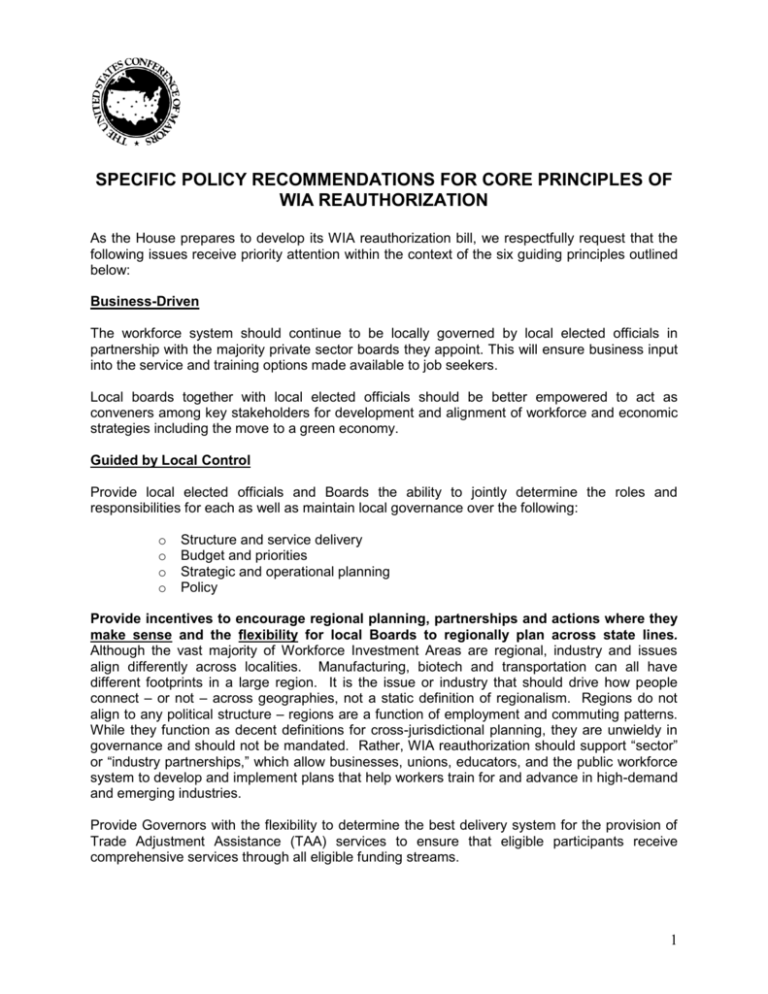
SPECIFIC POLICY RECOMMENDATIONS FOR CORE PRINCIPLES OF WIA REAUTHORIZATION As the House prepares to develop its WIA reauthorization bill, we respectfully request that the following issues receive priority attention within the context of the six guiding principles outlined below: Business-Driven The workforce system should continue to be locally governed by local elected officials in partnership with the majority private sector boards they appoint. This will ensure business input into the service and training options made available to job seekers. Local boards together with local elected officials should be better empowered to act as conveners among key stakeholders for development and alignment of workforce and economic strategies including the move to a green economy. Guided by Local Control Provide local elected officials and Boards the ability to jointly determine the roles and responsibilities for each as well as maintain local governance over the following: o o o o Structure and service delivery Budget and priorities Strategic and operational planning Policy Provide incentives to encourage regional planning, partnerships and actions where they make sense and the flexibility for local Boards to regionally plan across state lines. Although the vast majority of Workforce Investment Areas are regional, industry and issues align differently across localities. Manufacturing, biotech and transportation can all have different footprints in a large region. It is the issue or industry that should drive how people connect – or not – across geographies, not a static definition of regionalism. Regions do not align to any political structure – regions are a function of employment and commuting patterns. While they function as decent definitions for cross-jurisdictional planning, they are unwieldy in governance and should not be mandated. Rather, WIA reauthorization should support “sector” or “industry partnerships,” which allow businesses, unions, educators, and the public workforce system to develop and implement plans that help workers train for and advance in high-demand and emerging industries. Provide Governors with the flexibility to determine the best delivery system for the provision of Trade Adjustment Assistance (TAA) services to ensure that eligible participants receive comprehensive services through all eligible funding streams. 1 Funded to Reflect the Need for the Services Whether in a time of boom or bust, the nation relies on its local workforce system. In a difficult economic climate, like the current recession, job seekers come to One-Stops for labor market assistance, training and jobs. In a strong economy, business demand for skilled workers outpaces the supply. Providing sufficient funds to address the needs of job seekers and business is a key strategy for developing and maintaining a healthy economy. Funding the system at a level of $8.35 billion for FY10 is consistent with maintaining current funding levels for WIA based upon 2000 levels adjusted for inflation with the addition of an annual summer youth program. Focused on Youth Of the many initiatives funded by the American Recovery and Reinvestment Act (ARRA) to create jobs, the local workforce system truly rose to the challenge of putting America back to work. Within eight to twelve weeks after passage of ARRA and the issuance of federal guidance, five hundred and eighty five Boards implemented a Summer Youth program providing work readiness skills and employing _______ youth, committing 100% of the youth funds awarded. The local workforce system provides a bridge between hopelessness and a job, between no skills and a dim future to skills and a pathway out of poverty. As long as the education system continues to fail a significant segment of our youth, the local workforce system stands ready to, if adequately funded, provide the work experience, skills remediation and referral to apprenticeship, community college and local community-based organizations that can provide occupational skills to youth in alternative settings. Continued and increased investments in youth will impact the skills gap shortage and encourage the innovation needed from the next generation to generate jobs which youth and adults can fill. Built on Partnerships Since the initial implementation of WIA, local systems have built leveraged partnerships with multiple stakeholders. It takes a long time to develop and foster partnerships. Up-ending the current system and the partnerships in place will adversely impact those customers who most need to access the system. Align goals of workforce and adult education around economic competitiveness as a key outcome-to provide a streamlined process of education and career preparation. Adequately fund Adult Education, ESL, Pell Grants and Wagner-Peyser so that coordination can be easily facilitated. One-Stop Career Centers as Critical Service Delivery Mechanism The General Accounting Office has heralded the effectiveness and efficiencies of the One-Stop System. One-Stops all provide the same core and intensive services but are able to tailor local investments to meet the needs of local job seekers and employers. One-Stop Centers, created through the original WIA legislation, should remain as this service delivery mechanism under new legislation. 2

